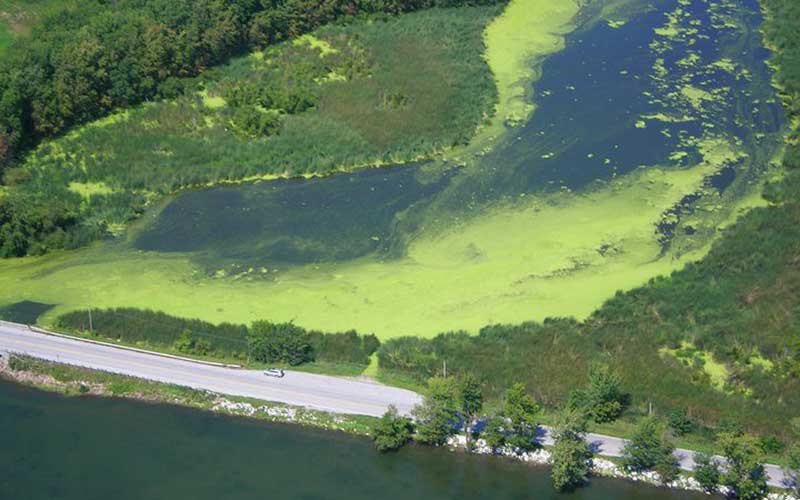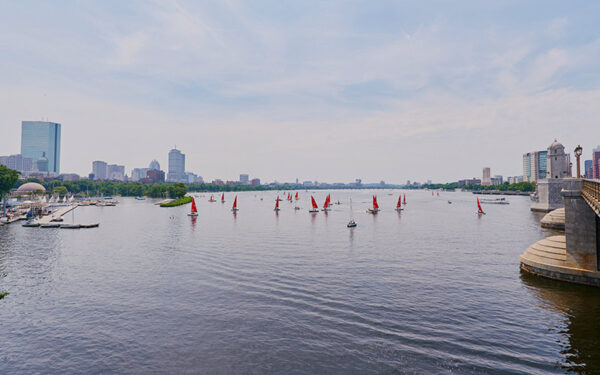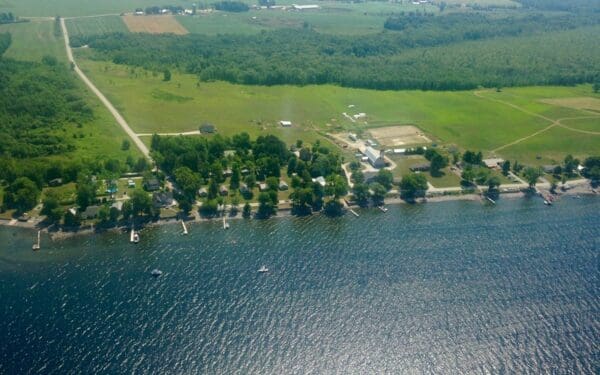
Every summer, blue-green algae outbreaks on Lake Champlain close beaches and threaten the health of people and wildlife. As the state looks at how to recover from the economic devastation caused by the coronavirus, full implementation of the Lake Champlain clean-up plan could provide an economic boost.
The health and economic impacts of coronavirus have been devastating for Vermonters. Over 1,200 people have been sickened, and the jobless rate peaked at a record 16.5% in April.
With infection rates in the state declining and our economy slowly reopening, many are asking how we overcome the greatest economic downturn in most Americans’ lifetimes.
It will take a suite of strategies to rebound from this unprecedented crisis, but one that should not be overlooked is the Lake Champlain clean-up effort. While the lake is a significant driver of our economy year-round, the federally mandated work to clean up our iconic waterbody can help fuel Vermont’s recovery from the pandemic – creating a win-win for our environment and economy, both in the short-term and in the future.
Clean Water is an Essential Service
What is the value of clean water to Vermonters living in the Champlain Basin? More than 200,000 people depend on the lake for drinking water, and many more rely on clean water for their livelihood and quality of life. A 2015 University of Vermont study suggests that the “$300 million estimated annual tourist expenditures in Vermont’s four main lakeside counties generate an additional $72.75 million in spending and nearly 1,070 jobs.” These figures don’t include the countless jobs and millions of dollars in income generated by businesses, nonprofits, and remote workers located in the Champlain Basin because of the quality of life and natural amenities it offers.
We benefit from thriving natural ecosystems in other ways, too. Healthy forests, wetlands, and floodplains filter water pollution, store carbon, provide critical habitat to fish and wildlife. They also reduce risk to communities living on the frontlines of climate change and endangered by the ravages of natural disasters – like Hurricane Irene – that are certain to return.
A Slow-motion Catastrophe
Unfortunately, Lake Champlain’s water quality is far from what it should be. Vermont is almost a quarter of the way into its 20-year plan to bring Lake Champlain’s pollution under control. Yet the state is only 8% of the way towards reaching its mandated phosphorus reduction goals basin-wide. At this rate, it will take more than 50 years to achieve those goals.
We see the consequences of such slow progress every summer. At the start of the season, the countdown begins anew to when the first reports of harmful blue-green algae and cyanotoxins will appear across our state. Caused by unchecked phosphorus pollution, these outbreaks are more than an eyesore. They force beaches to close to swimming, affecting our economy the local economy. And recent studies reveal how cyanotoxin exposure harms ecological and human health, even miles inland from polluted waterbodies.
Like climate change, algae outbreaks and cyanotoxins are slow-motion public health and economic catastrophes. It’s easier than it should be to say, “We’ll deal with this next year.” But it’s past time to stop piling the responsibility for environmental recovery – and the consequences of our inaction – on our children or grandchildren’s generations.
Clean Water Recovery on the Chopping Block?
In April, the Environmental Protection Agency issued an interim report card for Vermont’s Department of Environmental Conservation, which is charged with implementing the 2016 clean water restoration plan for Lake Champlain and its watershed. EPA’s takeaway message could be summed up as “A for effort.”
Thanks to CLF’s persistent advocacy, the State of Vermont has done an admirable job to date setting up programs to implement the pollution limits in the plan. But the truth is that we are falling far short in our efforts to clean up the lake, and time is running out. Making matters worse, budget shortfalls due to coronavirus threaten to slow clean water recovery and reinvestment to a crawl.
Just as Vermont needs to be ramping up its programs to protect and clean up the lake, the state Agency of Natural Resources, which oversees the Department of Environmental Conservation, is considering drastic cuts to essential programs and staff. Water quality testing, wetlands restoration, river corridor protection, and funding to assist with stormwater management are all on the chopping block.
This is the wrong approach.
A Win for the Economy and Environment
Much more than a legal obligation to restore water quality, investment in clean water and climate resilience will help create new jobs and put our economy back on track – all while protecting our natural and human environments. Nationwide, the restoration economy annually generates around 221,000 jobs, $6.27 billion in labor income, and $24.86 billion in economic output. Project planning, engineering, earthmoving, construction, forestry, and landscaping are among the many trades that stand to benefit from a focused effort on cleaning up our lake.
The Lake Champlain clean-up plan points the way to jobs, healthier communities, and clean water. As state and federal lawmakers chart a course forward to a more resilient future for Vermont, they don’t have to choose between the environment and economic stimulation. With focused state and federal investments, the restoration of Lake Champlain and its watershed is a win for our environment and our economy.



